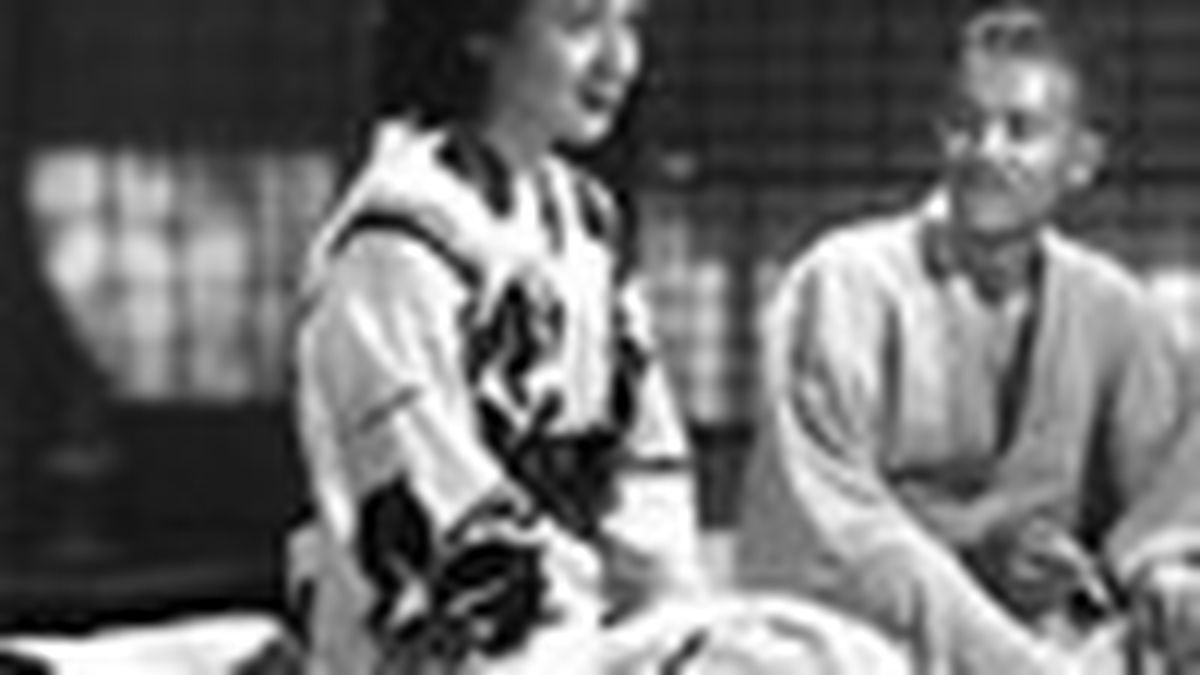Coming out of Tokyo Story at the Castro Theatre’s partial Yasujiro Ozu series last week, a moviegoer was heard saying to his partner, “There’s a pretty good movie buried in there somewhere.” The partner suggested that re-editing might be a remedy. My recommendation is that the two cross the bridge to the Pacific Film Archive’s near-complete Ozu retrospective “Filmmaker For All Seasons” (November 23 through December 21) and see every film they can. Maybe then their affliction can be cured.
By most reckonings, the last major Ozu series here was at least two decades ago. Although Ozu favorites have played repeatedly over the years, it’ll be a pleasurable shock to see them again together, this time as the work of a director the great Taiwanese filmmaker Hou Hsiao-Hsien said “taught me what I must express.”
A recent Japanese documentary demonstrated that tracing, repetition, and divergences were the structuring principles in Ozu’s films. The gags he used in the silent era for simple laughs — two schoolboys putting their lunches on their heads in I Was Born, But …, for example — are employed in the postwar films in a mocking, almost cruel way, as the scene in Late Autumn when two older, self-satisfied men smoke their pipes.
That’s one of the pleasures in a major retrospective of a filmmaker so sublime. As Edith Kramer, PFA director and senior film curator, says, “Looking at as many works as possible, you get a deeper understanding of his art, his obsessions, his own stylistic development. What stays the same and what changes — an opportunity to compare.”
People who are unfamiliar with Ozu’s complete work think of him only as the slow, gentle, “ultra-Japanese” director who used limited setups (like the spurious “tatami-level” camera angle most frequently cited). However, this is definitely not the case in his prewar films — Tokyo Chorus and Dragnet Girl are brilliant with slapstick and proto-noirish experimentation. But even after 1945, when Ozu underwent a radical stylistic change, his later films — so similar on the visual level that even obsessives mix up all the late and early autumns and springs — still register new tensions. There’s a whiff of late-20th-century change in the deceptively serene exchanges between husbands and wives, fathers and daughters, bar madams and salarymen.
The angry children in Ozu’s earlier domestic comedies still appear in such late films as Good Morning. But what’s interesting to watch throughout his filmography are the twentysomething daughters who, trying to go about their lives, are constantly being pressured to do something else. In response, they dodge and feint and smile, like most of actor Setsuko Hara’s classic characters, especially in the masterpiece Late Spring. Or they make angry scenes, like her 1960s counterparts in Late Autumn and An Autumn Afternoon. When they burst into tears or resign themselves to an unhappy decision, Ozu bathes the women in a luminosity that congratulates them for making such a sacrifice. And even when they say that all men are devious no-goods and all marriages are alike, their good humor shines through — but with a distinct edge in the later films.
As Kramer notes, Ozu’s family dynamics fit right into the 21st century. “Ozu is extraordinarily modern,” she opines. “He was modern when he started, and he’s modern today long after he’s gone from us.”














